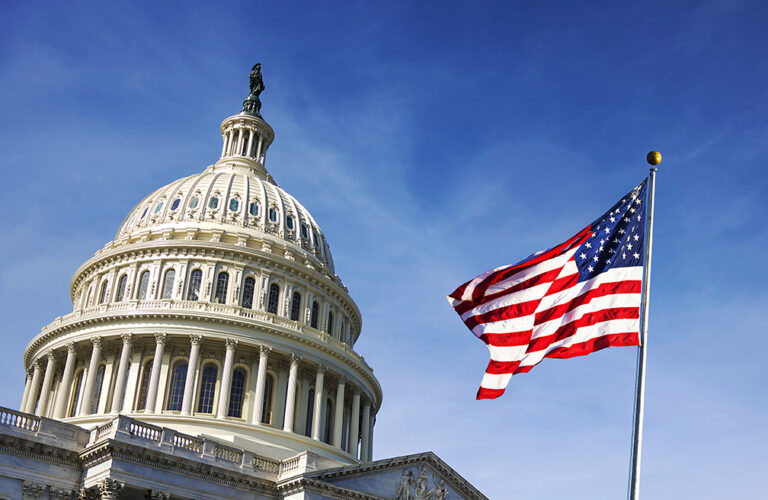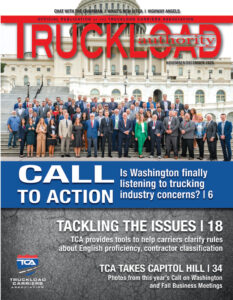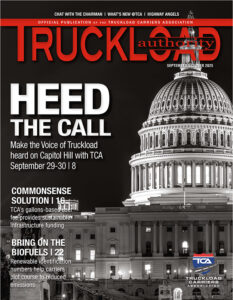Ask any motor carrier executive, employee, or professional truck driver about safety and you’ll get a quick and profound response: “Safety is our No. 1 priority.” However, as those same industry stakeholders know, data on safety — for both trucking and the general population — has been of growing concern recently. To that end, Capitol Recap begins with information about the federal government’s recently announced National Roadway Safety Strategy. The plan includes a call for automatic emergency braking on both cars and heavy-duty tractors, something that has been controversial among members of the trucking industry. The Department of Transportation (DOT) says it will use a five-pronged model to address safety — safer people, safer roads, safer vehicles, safer speeds, and post-crash care. Among other subjects covered in this issue are a report on a meeting among truck drivers and DOT officials in South Carolina and the decision of Meera Joshi, who was acting administrator of the Federal Motor Carrier Safety Administration (FMCSA), to leave the agency for a job in New York City. Joshi had also been President Joe Biden’s nominee to become FMCSA administrator.
DOT announces comprehensive National Roadway Safety strategy

The U.S. Department of Transportation (DOT) has announced the federal government’s new National Roadway Safety Strategy (NRSS), a roadmap for addressing the national crisis in roadway fatalities and serious injuries.
The plan includes a call for automatic emergency braking on both cars and heavy-duty tractors, something that has been controversial among members of the trucking industry.
Almost 95% of the nation’s transportation deaths occur on its streets, roads, and highways, according to DOT statistics. While the number of annual roadway fatalities declined for many years, progress plateaued over the last decade with fatalities rising during the COVID-19 pandemic.
“We cannot tolerate the continuing crisis of roadway deaths in America. These deaths are preventable, and that’s why we’re launching the National Roadway Safety Strategy (NRSS) today — a bold, comprehensive plan, with significant new funding from President Biden’s Bipartisan Infrastructure Law,” said U.S. Transportation Secretary Pete Buttigieg. “We will work with every level of government and industry to deliver results, because every driver, passenger, and pedestrian should be certain that they’re going to arrive at their destination safely, every time.”
The DOT, as part of the NRSS, is adopting the “Safe System Approach,” which acknowledges both human mistakes and human vulnerability, and designs a redundant system to protect everyone by preventing crashes and ensuring that when they do happen they do not result in serious injury or death.
The DOT will use a five-pronged model to address safety — safer people, safer roads, safer vehicles, safer speeds, and post-crash care.
A few of the key actions include:
- Working with states and local road owners to build and maintain safer roadways through efforts, including updates to the Manual on Uniform Traffic Control Devices, a Complete Streets Initiative to provide technical assistance to communities of all sizes and speed-limit setting.
- Leveraging technology to improve the safety of motor vehicles on U.S. roadways, including rulemaking on automatic emergency braking and pedestrian automatic emergency braking, along with updates to the New Car Assessment Program.
- Investing in road safety through funding in the Bipartisan Infrastructure Law, including a $6 billion Safe Streets and Roads for All program, hundreds of millions for behavioral research and interventions, and $4 billion in additional funding for the Highway Safety Improvement Program.
The strategy was developed in coordination with the DOT’s Executive Safety Council, led by Deputy Transportation Secretary Polly Trottenberg.
The NRSS builds on efforts from across DOT’s three roadway safety agencies, the Federal Highway Administration (FHA), National Highway Traffic Safety Administration (NHTSA), and the Federal Motor Carrier Safety Administration (FMCSA).
“The Roadway Safety Action Plan is designed to focus all of DOT’s resources, authorities, and incredible expertise, working with our stakeholders, to combat the tragic number of fatalities and serious injuries we see on U.S. roadways — from our largest cities and towns to rural and tribal communities all across the country,” Trottenberg said.
“Unfortunately, many roads are not designed to ensure safe travel at safe speeds for everyone, especially the most vulnerable road users,” said FHA Deputy Administrator Stephanie Pollack. “The Bipartisan Infrastructure Law provides a tremendous opportunity for FHA to work closely with state, local and tribal partners to put increased transportation funding to work incorporating safety for all users into every federally funded road project.”
FMCSA Executive Director and Chief Safety Officer Jack Van Steenburg concurred.
“FMCSA is committed to reducing Commercial Motor Vehicle fatalities and overall fatalities. We will work across the DOT to coordinate proactive compliance and outreach programs and work collaboratively with all stakeholders,” he said. “Our goal is to prevent crashes and preserve the quality of life for all roadway users across America. Zero is our goal.”
Drivers meet with departing FMCSA leader
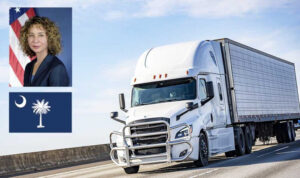
The U.S. Department of Transportation’s (DOT) Federal Motor Carrier Safety Administration (FMCSA) outgoing Deputy Administrator Meera Joshi met with independent truck drivers in Charleston, South Carolina, as part of the federal government’s efforts to help bolster the trucking industry during a time of supply chain woes.
She met with the drivers shortly before leaving the FMCSA to take a position in the New York City Mayor’s Office.
At the roundtable, DOT officials spoke with truck drivers about how the FMCSA will work closely with its federal and state partners to address truck driver retention, wages, and sufficient and safe overnight parking, along with barriers facing those wishing to enter the industry.
DOT Secretary Pete Buttigieg joined the conversation virtually.
Truck drivers in attendance at the event highlighted the challenges of making a living without adequate support to improve detention times — particularly at shipping ports, but also at loading docks in general.
Juan Gordan, president of Coalition 18, a South Carolina-based trucking organization, said, “We’ve lost two-thirds of our work. We used to make ‘six turns’ a day; now we can only make ‘two turns’ a day, and under these circumstances, drivers can’t survive. Younger truckers are no longer telling the stories that their fathers and uncles used to tell. Instead, they’re telling horror stories — the detention times are too long.”
Owner-Operator Independent Drivers Association (OOIDA) Executive Vice President Lewie Pugh agreed, noting, “There’s a lot of talk about bringing new people into the industry, but we need to think about the quality of life for the people in the industry right now.”
Joshi’s visit to South Carolina took place the same day the Biden-Harris administration announced its Trucking Action Plan to Strengthen America’s Trucking Workforce during a White House forum co-chaired by Buttigieg, Department of Labor (DOL) Secretary Marty Walsh, and National Economic Council Director Brian Deese.
“It cannot be overstated how vital truck drivers are to every American family,” said Joshi. “As a nation, we count on truckers time and time again during crises. But truck drivers deserve not only our appreciation, but also our respect and support, including fair compensation and safe and sufficient rest areas.”
The Trucking Action Plan included the launch of the joint Driving Good Jobs initiative, which marks a new partnership between DOT and DOL.
“This initiative directs FMCSA to take actions, including conducting a series of truck driver and industry listening sessions around the country; studying the issue of truck driver pay and unpaid detention time; setting up a task force to investigate predatory truck-leasing arrangements; and identifying longer term actions, such as potential administrative or regulatory steps that support drivers and improve driver retention by raising the quality of trucking jobs,” according to a DOT news release.
Robin Hutcheson new acting chief at FMCSA

Before she was even confirmed by the Senate, Meera Joshi, deputy administrator of the Federal Motor Carrier Safety Administration (FMCSA), resigned to accept a role as one of New York City’s deputy mayors.
New York Mayor Eric Adams in late December selected Joshi to serve as deputy mayor of operations.
About one month after Joshi resigned, Robin Hutcheson, the deputy assistant secretary for safety policy at the U.S. Department of Transportation (DOT), was named FMCSA’s new deputy administrator. U.S. Transportation Secretary Pete Buttigieg made the announcement, adding that Hutcheson will also serve as acting FMCSA administrator.
Hutcheson has helped oversee safety policies at DOT since January 2021, according to a DOT news release.
“She was instrumental in the development of the Bipartisan Infrastructure Law, especially the new Safe Streets and Roads for All program,” stated the news release.
Before being appointed to the Biden-Harris administration, Hutcheson was the director of public works for the City of Minneapolis, where she oversaw a team of 1,100 people across nine divisions, including drinking water, surface waters and sewers, solid waste and recycling, fleet management, and all transportation functions.
Prior to her appointment in Minneapolis, Hutcheson served as the transportation director for Salt Lake City. She also has served as a consultant specializing in transportation and transit and has worked throughout the western United States, in London, France, and for the European Union Commission on Sustainability, the news release stated.
Hutcheson served seven years on the board of directors for the National Association of City Transportation Officials (NACTO), most recently serving as its president.
“Deputy Administrator Hutcheson brings with her an extensive amount of experience in roadway safety, and we welcome her to the trucking segment of the transportation sector,” stated David Heller, Vice President of Government Affairs for the Truckload Carriers Association (TCA). “TCA works closely with our counterparts at FMCSA and we look forward to engaging with her on many pressing issues for our nation, including the driver shortage and forthcoming 18- to 20-year-old driver apprenticeship program, the Drug and Alcohol Clearinghouse, and the search for ways to make the driver’s job easier and more attractive.”
NTSB chief to DOT: Stop using misleading statistics

With traffic fatalities spiking higher, the nation’s top safety investigator says a widely cited government statistic that 94% of serious crashes are solely due to driver error is misleading and that the U.S. Department of Transportation (DOT) should stop using it.
The National Transportation Safety Board (NTSB) Chair Jennifer Homendy told The Associated Press that she was surprised to see that the wording remained on the department’s website even as the Biden administration pledged to embark on a broader strategy to stave off crashes through better road design, auto safety features, and other measures.
Auto safety advocates have been calling on the DOT for years to stop using the statistic, including requests by Homendy in recent months as well as a letter from auto safety groups to Transportation Secretary Pete Buttigieg late last year. They call the figure an unacceptable “excuse” for surging crashes. In a section touting the safety potential of automated vehicles, the National Highway Traffic Safety Administration’s (NHTSA) website states “94% of serious crashes are due to human error.”
“That has to change,” said Homendy of NHTSA’s continuing use of the statistic. “It’s dangerous.”
She said the public should be enraged that nearly 40,000 people are dying annually in traffic accidents and millions are injured, but that instead many see it as “just a risk people take.”
“What’s happening is we have a culture that accepts it,” she said.
“At the same time, it relieves everybody else of responsibility they have for improving safety, including DOT,” she added. “You can’t simultaneously say we’re focused on a ‘safe system’ approach — making sure everybody who shares responsibility for road safety is taking action to eliminate fatalities and serious injuries … and have a 94% number out there, which is not accurate.”
NHTSA said in January that it would update the wording on its website in the near future “to address that characterization of the data as well as provide additional information.”
The figure stems from a NHTSA memo put out in 2015 stating that “the critical reason, which is the last event in the crash causal chain, was assigned to the driver in 94% of the crashes.” However, the memo also included a caveat that a “critical reason” is “not intended to be interpreted as the cause of the crash” and pointed to other significant factors.
State transportation agencies and the department, led by then-Transportation Secretary Elaine Chao, subsequently cast the memo as finding that 94% of serious crashes happened “due to human error,” often when promoting the development of automated vehicles.
Traffic fatalities have surged in recent years, particularly during the coronavirus pandemic. The number of U.S. traffic deaths in the first six months of 2021 hit 20,160, the highest first-half total since 2006. The number was 18.4% higher than the first half of 2020, prompting the administration to embark on a broader strategy.
Traffic deaths began to spike in 2019, and NHTSA blamed speeding and other reckless driving behavior for the increases. Before then, the number of fatalities had fallen for three straight years.
Recently, Homendy echoed other safety groups in saying continued use of the figure, particularly by NHTSA itself, distracts from the comprehensive approach that is now needed. In a letter to Buttigieg in December, groups including Advocates for Highway and Auto Safety, the Consumer Federation of America, and Center for Auto Safety stressed the need for a multifaceted plan to reduce crashes, including issuing long-overdue safety standards mandated by Congress and more closely overseeing the deployment of autonomous vehicles on the road.
The continued use of the 94% data point, they wrote, “ignores the complexities of crashes and undermines efforts to implement the Safe System Approach which examines how all aspects of the transportation environment contribute to crashes.”
In a separate roadmap for safety in January, Advocates for Highway and Auto Safety pointed to rising crashes among automated vehicles and cited them as one of the greater threats on the road due to insufficient safety.
The administration has expressed a greater commitment to improving safety for all road users. President Joe Biden’s sweeping infrastructure law, for instance, broadly promotes a “safe system” approach urged by NTSB that is aimed at minimizing the impact of human mistakes and protecting people who walk and bike as well as drive.
Many states see sharp rise in highway deaths
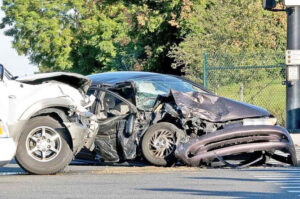
Several states are reporting sharp rises in fatal roadway accidents over the past year as officials nationwide are trying to come up with ways to curb highway deaths.
The statistics reported did not include the types of vehicles involved in fatality accidents, such as sedans, SUVs, 18-wheelers, etc.
However, in June 2021, the National Highway Traffic Safety Administration reported that traffic deaths involving large trucks fell by 2%.
Speed and distracted driving were the most-blamed reasons for states’ rising highway fatality rates.
Last year, 672 people were killed on Colorado roadways — the most deaths since 2002. That number is expected to increase as the Colorado Department of Transportation continues to receive additional crash reports. This marks a 50% increase from the state’s 447 fatalities recorded in 2011.
In Utah, 320 people died on highways in 2201, according to the Utah Department of Transportation (UDOT) and Utah Highway Patrol (UHP).
“These are not just statistics,” UHP Colonel Michael Rapich told the Salt Lake Tribune. “These are horrible, tragic events that involve violent tragedy.”
As 2021 ended, Minnesota recorded its most traffic fatalities in 14 years.
The Minnesota Department of Public Safety says 497 people died on that state’s roads in 2021. That’s the highest number since 2007, when there were 510 traffic deaths.
A record number of traffic-related deaths were also reported in Oregon last year. As of November 30, 2021, the Portland Police Bureau said there were 62 fatal crashes and 26 pedestrian fatalities in Portland, which is the highest number of roadway crashes recorded since 1990 with 63 deaths.
State troopers, including Utah’s Rapich, are often the ones who witness these deaths, view the gruesome injuries, and tell families that a loved one won’t arrive home safely. They also know that more than 90% of these crashes could have been prevented, Rapich said, if the drivers weren’t speeding, weren’t intoxicated, weren’t distracted with their phones.
“They feel strongly about it, and they take it personally when they see — whether it be an impaired driver or an aggressive driver or distracted driving or all these behaviors that are absolutely preventable and people should know better,” said Rapich. “That’s impactful with our troopers.”
In Utah, speeding vehicles and impaired drivers caused the largest number of deaths, 81 and 138 respectively.
Seventy-four people who died in the state were not wearing seat belts. About 12% of Utah residents don’t wear seat belts according to UDOT director Carlos Braceras, even though they are the “simplest, easiest” way to reduce serious injuries or death.
Up more than 15% since 2020, last year saw the highest number of deaths in nearly two decades when 329 people died in 2002, according to UDOT and UHP data.
“The numbers are absolutely devastating to people here in our organization and to our partners at Highway Patrol who work so hard to get to zero fatalities,” said Braceras.
Drivers don’t often consider that every decision made on the road can have consequences, according to Braceras. Those decisions could save a life — or take one.
“When you’re driving a car, that is probably the most dangerous thing anyone will ever do,” observed Braceras.
Fatalities declined from 2016 to 2019 but began to rise in 2020 when 276 people died.
“It’s discouraging,” said Utah Safety Council president John Wojciechowski. “Just when you think you’re making headway, then we have a year like this, and it’s tough.”
Braceras points to the uncertainties of the COVID-19 pandemic as a potential reason behind the numbers.
“People over the last two years have been dealing with stuff they’ve never dealt with before,” added Braceras. “I don’t have data behind it, but we believe all of these stresses are at least partly if not completely behind these changes.”
Most of those killed were people traveling in enclosed vehicles, but 44 pedestrians, 37 motorcyclists, and six bicyclists also died on the roads.
Zero fatalities isn’t just a mantra for road safety advocates. It’s a real goal for UDOT, UHP, and the Utah Safety Council. Reaching that goal requires each person to take responsibility for driving safely, said Braceras.
The Zero Fatalities program, a partnership of various agencies and organizations, lays out several methods of reducing traffic deaths.
Updated laws, including the graduated licensing for teens driving and the reduced legal limit for blood-alcohol content (BAC) to 0.05, have helped with safety on the roads, noted Rapich, but more still needs to be done to encourage safe driving.
Study: Trucking accidents up after ELD mandate

A new study by the Supply Chain Management Research Center at the University of Arkansas found that there was an increase in unsafe driving incidents following the implementation of the federal electronic logging device (ELD) mandate.
“Surprisingly, the number of accidents for the most-affected carriers — those operators for whom the federal mandate was intended — did not decrease,” said Sam M. Walton College of Business’ Research Associate Andrew Balthrop.
“In fact, following the implementation of the mandate, accidents among small carriers and independent owner-operators increased, relative to large asset-based carriers,” he continued.
In December 2017, the Federal Motor Carrier Safety Administration (FMCSA) began enforcing a mandate requiring truck drivers to track their working hours with an ELD. Compared to traditional paper logs, such devices made it more difficult for drivers to manipulate records to make it appear they are complying with hours-of-service regulations, when in fact they are not.
After a “light enforcement” period, regulators began strictly enforcing the mandate April 1, 2018.
According to a University of Arkansas news release, Balthrop and several colleagues analyzed detailed data from the FMCSA to determine how the mandate affected three critical transportation safety-related outcomes — compliance with reporting hours of service, accident counts, and frequency of unsafe driving.
Focused on these outcomes, the researchers compared data over three time periods — before the mandate and during the light and strict enforcement periods. They also looked at these outcomes based on company size, ranging from independent owner-operators to carriers with more than 50,000 trucks.
The mandate significantly improved driver compliance with reporting hours of service, the researchers found. This was especially true for small carriers and independent owner-operators. Large carriers had already been using ELDs before the mandate and were practically unaffected.
For most carriers — that is, all categories other than the carriers with more than 50,000 trucks — the number of accidents increased after the federal mandate took effect. Again, this was especially true for independent owner-operators.
They experienced an 11.6% increase in accidents, and carriers with two to 20 trucks saw a 9% increase.
The researchers’ analysis of unsafe driving infractions for different sizes of carriers during the light and strict enforcement periods showed that these also increased compared to infractions before the mandate took effect. This was true for all size categories, but the increases were greater for small and medium-sized carriers who had not been using an electronic logging device before the mandate.
The ELD mandate coincided with an increase in unsafe driving and speeding citations among truck drivers, and this likely caused an increase in accidents, said Balthrop.
The stricter hours-of-service enforcement seems to have led more drivers to try to compress their routes into the time allotted.
CVSA adopts North American Fatigue Management Program

The Commercial Vehicle Safety Alliance (CVSA) has partnered with the North American Fatigue Management Program (NAFMP) to help mitigate crash risks due to drowsy drivers behind the wheel.
The NAFMP was developed by medical and sleep scientists from Canada and the U.S. through a multiyear, four-phase comprehensive process, according to a CVSA news release.
“Our goal at CVSA is to prevent crashes involving commercial motor vehicles,” said CVSA President Capt. John Broers with the South Dakota Highway Patrol.
“Offering the North American Fatigue Management Program as one of the alliance’s driver-related educational programs helps us do our part to combat crashes caused by driver fatigue and exhaustion,” he added.
Former FMCSA Deputy Administrator Meera Joshi said before she resigned in late December that the agency was “excited for this additional opportunity to partner with CVSA to address driver fatigue.
FMCSA has supported the NAFMP since its inception and looks forward to CVSA continuing to provide this important program to educate the motor carrier industry on driver fatigue.”
The program aims to prevent driver fatigue and eliminate fatigue-related crashes by:
- Offering easy-to-access online fatigue prevention training and education to commercial motor vehicle drivers, motor carrier executives and managers, freight shippers and receivers, dispatchers, driver managers, drivers’ spouses and families, safety managers and trainers, etc.;
- Encouraging a motor carrier safety culture that proactively considers situations that might contribute to driver fatigue and fights to prevent those situations;
- Identifying sleep disorders and treatment options; and,
- Utilizing driver fatigue management technologies.
In addition, CVSA plans to enhance, improve, and grow the program by:
- Hosting live and recorded Q&A sessions;
- Offering a moderated forum where users can ask questions and provide feedback;
- Offering information sessions at CVSA events and conferences;
- Hosting program and steering committee meetings to discuss program improvements;
- Offering webinars on various topics relevant to fatigue management; and
- Offering Spanish content in addition to English and French.
“CVSA has the ideal infrastructure of events and channels of communication to foster the NAFMP,” said NAFMP Steering Committee Chair Roger Clarke.
Carriers, owner-operators, and drivers can download a step-by-step implementation manual and register in the eLearning platform for the program courses.
“This program has the potential to reduce fatigue-related risks, improve driver alertness, health and wellness, increase productivity, and decrease crashes and roadway fatalities,” said Broers.
“The online training and educational courses available through this program are free, voluntary, self-paced and available 24/7,” he noted. “We encourage all drivers and motor carriers to utilize these online tools.”
Feds giving $241 million to ports to boost supply chain
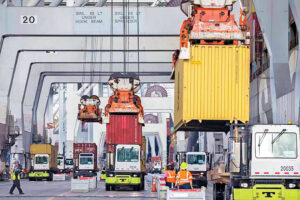
Transportation Secretary Pete Buttigieg is awarding more than $241 million in grants to bolster U.S. ports, part of the Biden administration’s near-term plan to address America’s clogged supply chain with infrastructure improvements to speed the flow of goods.
The transportation money is being made available immediately to 25 projects in 19 states. Next year, the amount of money for port improvements will nearly double to $450 million in grants annually for five years under President Joe Biden’s new infrastructure law.
“U.S. maritime ports play a critical role in our supply chains,” said Buttigieg. “These investments in our nation’s ports will help support American jobs, efficient and resilient operations, and faster delivery of goods to the American people.”
Biden touted the coming grants as one of a series of efforts that will alleviate supply bottlenecks over the short and long term.
“Earlier this fall we heard a lot of dire warnings about supply chain problems leading to a crisis around the holidays, so we acted,” said Biden. “We brought together business and labor leaders to solve problems, and the much-predicted crisis didn’t occur. Packages are moving. Gifts are being delivered. Shelves are not empty.”
The grant money includes $52.3 million to help boost rail capacity at the port in Long Beach, California, with a new locomotive facility, a 10,000-foot support track, and the extension of five existing tracks to speed up freight movement while cutting down the number of truck trips required.
Other recipients include:
- Portsmouth, Virginia: $20 million to help build out a supply chain for the offshore wind industry.
- Brunswick, Georgia: $14.6 million to build a fourth berth for cargo ships at Colonel’s Island Terminal.
- Houston, Texas: $18.3 million to facilitate more export and import cargo by significantly boosting storage capacity at the Bayport Container Terminal.
- Tell City, Indiana, $1.6 million to construct a 40-foot diameter pier on the Ohio River that can be used direct barge-to-truck unloading of cargo.
- Delcambre, Louisiana: $2 million for dock restoration and climate resiliency.
In recent months, higher prices have eaten into wages and turned public sentiment regarding the economy against Biden in polls.
One of the obstacles for reducing inflation amid the coronavirus pandemic has been backlogged ports with ships waiting to dock at major transit hubs, causing shortages and leaving some store shelves depleted in communities across the United States.
Buttigieg’s announcement seeks to build on moves by the U.S. Department of Transportation (DOT) to reduce supply chain congestion, such as allowing port authorities to redirect leftover money from grant projects.
For example, the Georgia Ports Authority is using $8 million to convert its inland facilities for the port of Savannah into container yards, freeing up dock space and speeding the flow of goods to their final destinations.
Earlier, the Biden administration sought to reduce delays by working to move major ports to 24/7 operations. The administration is also seeking to improve working recruitment and retention in the trucking industry.
Still, supply chain issues linger, and the steps taken by the administration have shown there is no quick fix to the problems that have been hurting smaller businesses and causing consumers to face higher prices.
The DOT said the projects receiving grants vary widely in readiness to get off the ground and that it could take months before consumers can start to feel the effects from the improvements.
The Truckload Authority News Staff, comprised of award winning journalists and graphic artists, produces content for Truckload Authority, working in cooperation with the Truckload Carriers Association staff. Truckload Authority aims to keep TCA members abreast on the latest trends in the trucking industry as well as articles that feature TCA member executives and drivers. The Truckload Authority staff is based in Little Rock, Arkansas.








